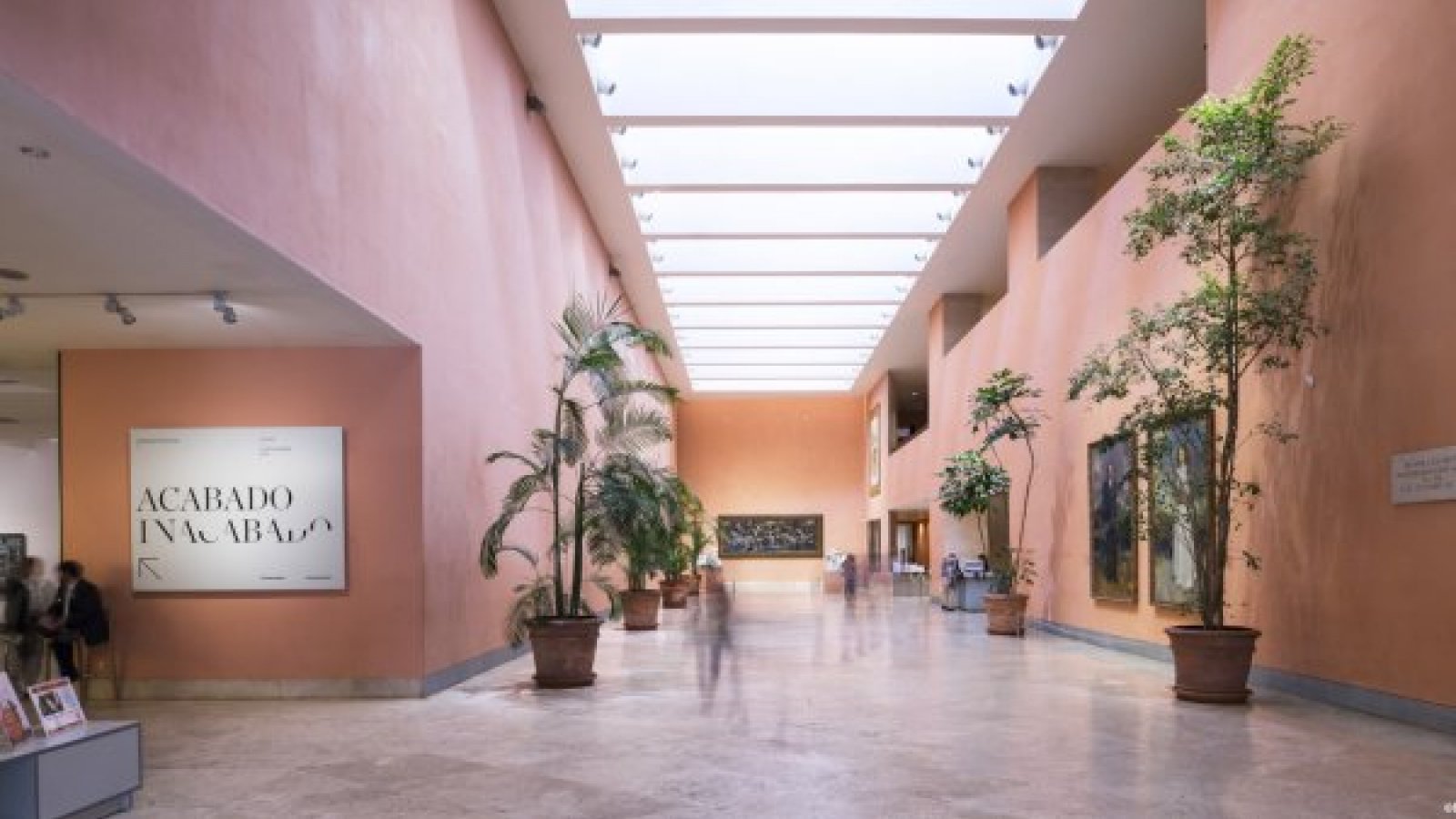In the Eye of the Storm: Modernism in Ukraine, 1900 - 1930s
Sections of the exhibition
Contents to make the most of your visit
AUDIOGUIDE, which will allow you to listen to the explanation of the most important works in the exhibition. The PODCAST we have recorded (in Spanish) with Katia Denysova and Marta Ruiz del Árbol, curator and technical curator of the display. The SPOTIFY playlist, with a selection of recent hits, contemporary classics and the carol Carol of the Bells, inspired by a Ukrainian folk song. And finally, check out the VIRTUAL GUIDE to help you make the most of your visit to the museum.
Introduction
In the Eye of the Storm: Modernism in Ukraine, 1900–1930s recreates the polyphony of artistic styles and cultural identities that existed in Ukraine in the early 20th century. The exhibition focuses on the cities of Kyiv and Kharkiv, telling the story of Ukrainian modernist artists and their attempts to produce a recognisable national style in a bid for Ukrainian statehood and cultural autonomy.
Geopolitically, Ukraine had for centuries been a borderland with its territory divided between various empires and its people not perceived as a single nation until the late 19th century. Yet there were short periods of independence crucial for the formation of a Ukrainian identity. The complex historical background resulted in a vibrant amalgamation of encounters, a blending of Ukrainian, Polish, Russian and Jewish elements that created a distinctly local cultural profile.
The modernist movement in Ukraine unfolded against a complicated socio-political backdrop of collapsing empires, World War I, the revolutions of 1917 with the ensuing short-lived independence of the Ukrainian People’s Republic (1917–20), and the eventual establishment of Soviet Ukraine. Despite such political turmoil, this became a period of true flourishing in Ukrainian art, literature, theatre and cinema.

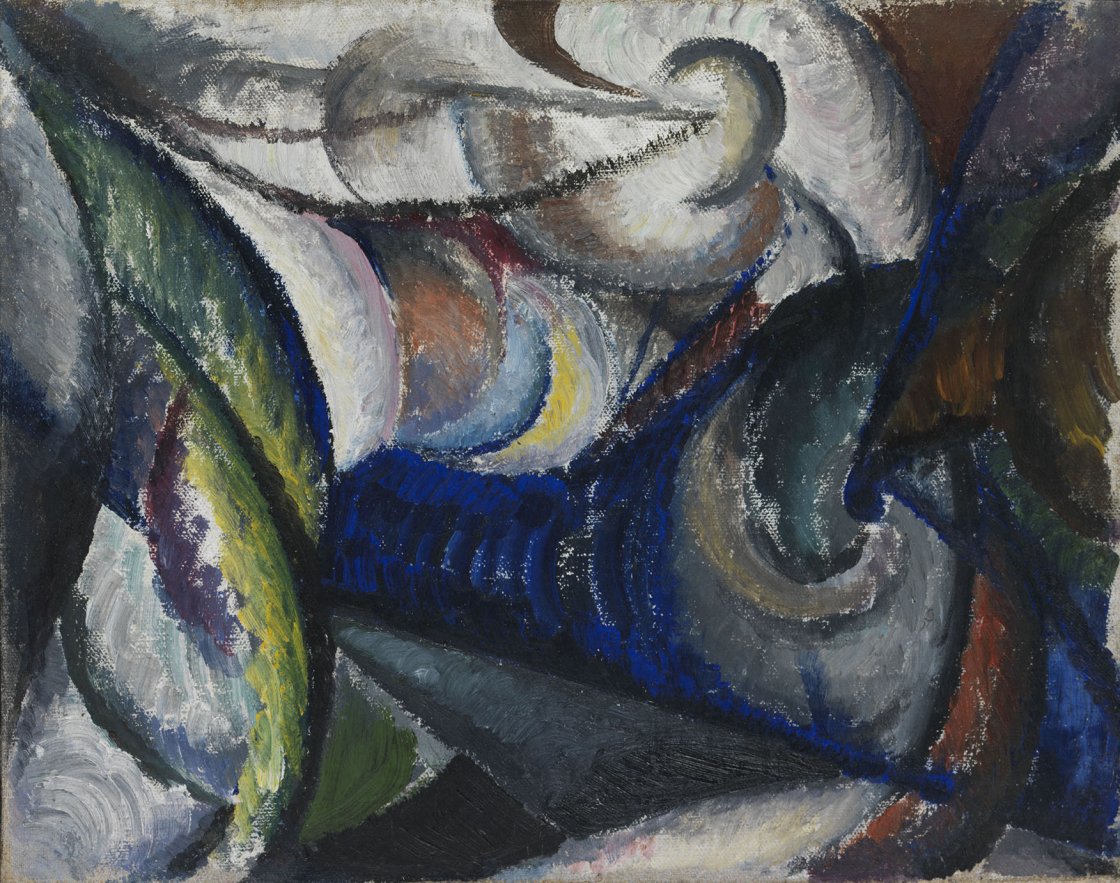
Cubo-Futurism
In Western Europe, modernism had evolved organically: radical art trends had developed only after Impressionism and Post-Impressionism had prepared the ground. In Ukraine, modernism and the avant-garde appeared almost simultaneously. Artistic styles not only quickly replaced each other, but also coexisted, constantly mutating and changing. Young artists from Ukraine combined elements of French Cubism and Italian Futurism to create a home-grown version of Cubo-Futurism. Featuring compositional dynamism and simplification of forms with a gradual move towards abstraction, art created in Ukraine was characterised by an abundance of colour, inherited from Ukrainian folk traditions and decorative art.
Kultur Lige
The Kultur Lige and its Art Section were the most significant organisations of Jewish cultural life in early 1920s Ukraine, occupying a prominent place in the broad spectrum of its multi-ethnic culture. The Kultur Lige was founded in Kyiv in 1918, within a unique political context shaped by the Ukrainian People’s Republic (1917–20), to promote the development of all spheres of contemporary Yiddish culture. Its Art Section united young Jewish artists from Kyiv, as well as many other cities, who espoused a synthesis of Jewish artistic tradition and the achievements of the European avant-garde. The Kultur Lige ceased to exist by the mid-1920s under growing pressure from the Soviet regime.
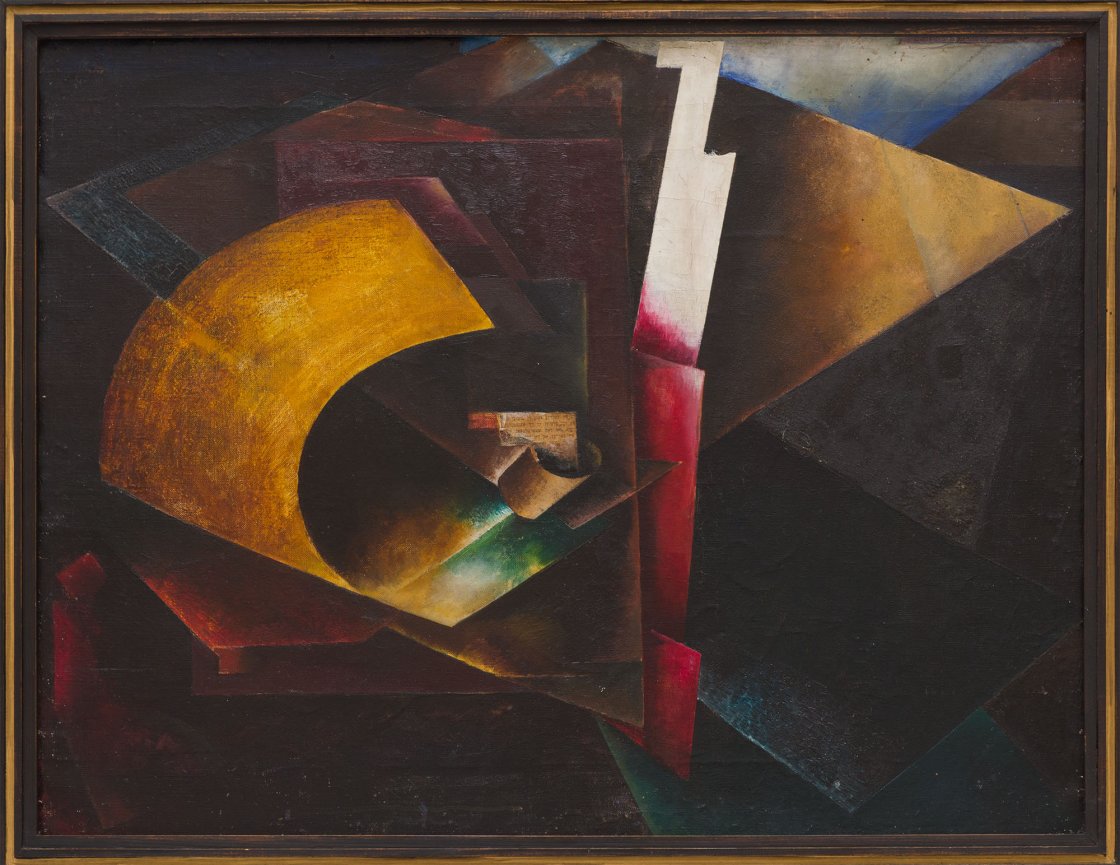
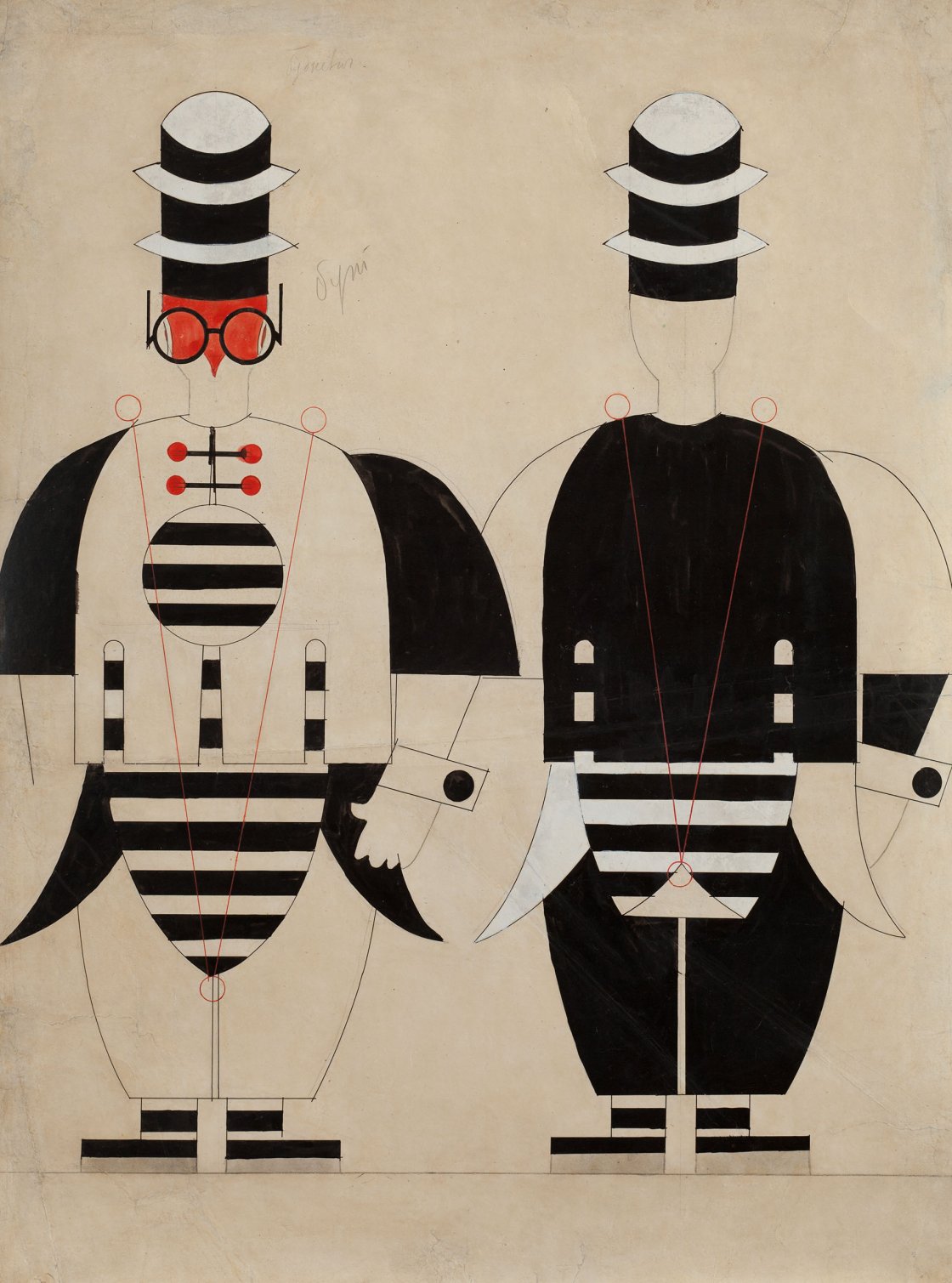
Theatre Design
In the 1910s–20s, Ukrainian urban centres witnessed the coexistence of experimental writers, directors and stage designers that revolutionised the theatre. Two names stand out as catalysts of this transformation: Alexandra Exter and Les Kurbas. In 1916, Exter pioneered the translation of Cubist principles into scenography. In 1918, she opened a studio in Kyiv with a separate course on stage design, from which emerged some of the most acclaimed theatre designers of the next generation. As a theatre director, Kurbas introduced a modern European repertoire to his productions, first in Kyiv and later in Kharkiv. He engaged the most progressive artists as scenographers to explore the creative intersections between the achievements of the West, especially Expressionism and Constructivism, and the revival of native folk traditions.
Kharkiv
After nearly five years of bloody War of Independence (1917–21), the Bolsheviks defeated the nationalist Ukrainian forces and established the Ukrainian Socialist Soviet Republic with Kharkiv as its capital. The city was quickly transformed from a provincial centre into a refined cultural hub. In 1923, the policy of ukrainisatsiia (Ukrainisation) was introduced to facilitate the development of a national language and culture. Kharkiv thus became a springboard for the ambitious project of creating a new cultural identity that was both Ukrainian and Soviet, bringing together the best artists, writers and scholars.
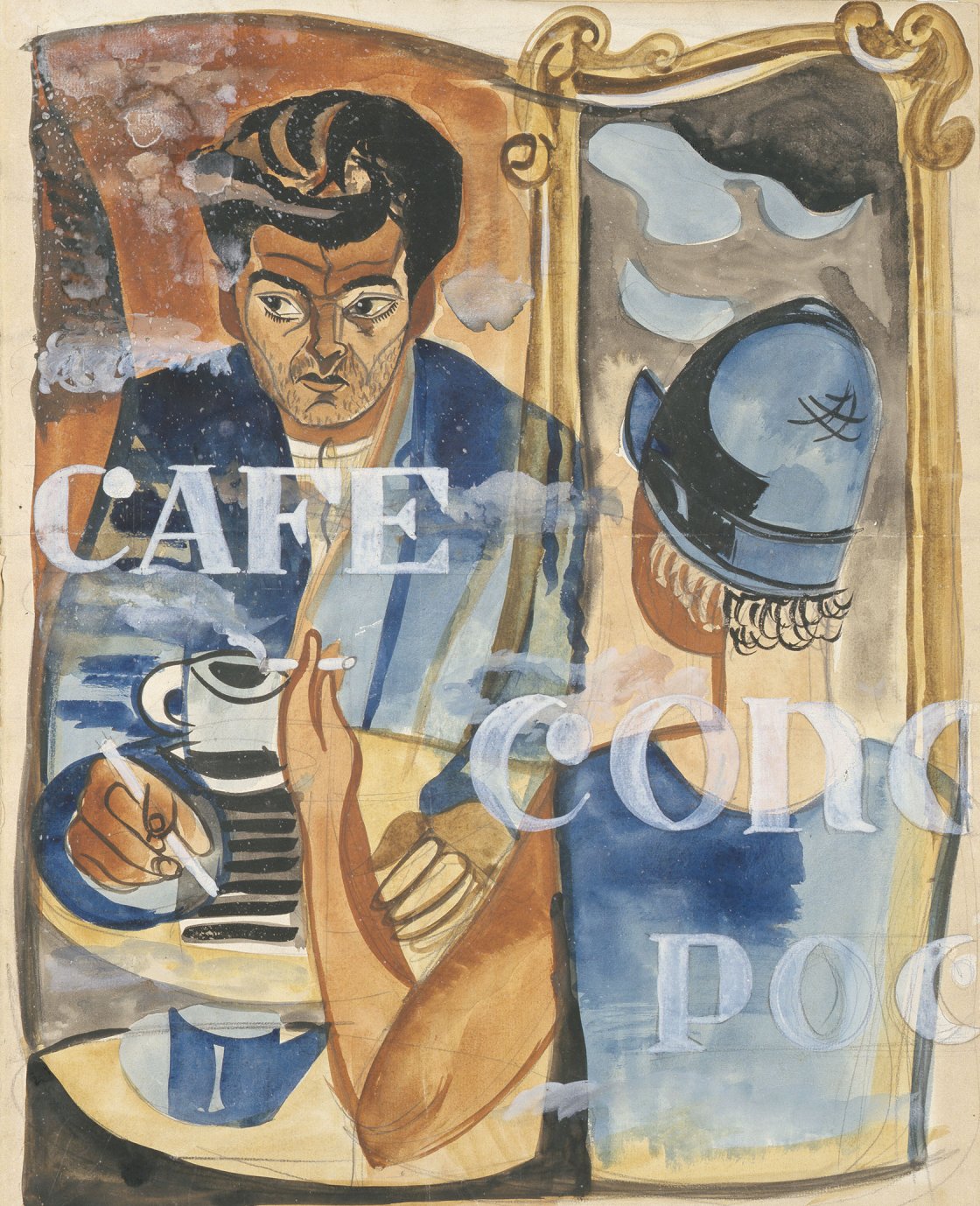
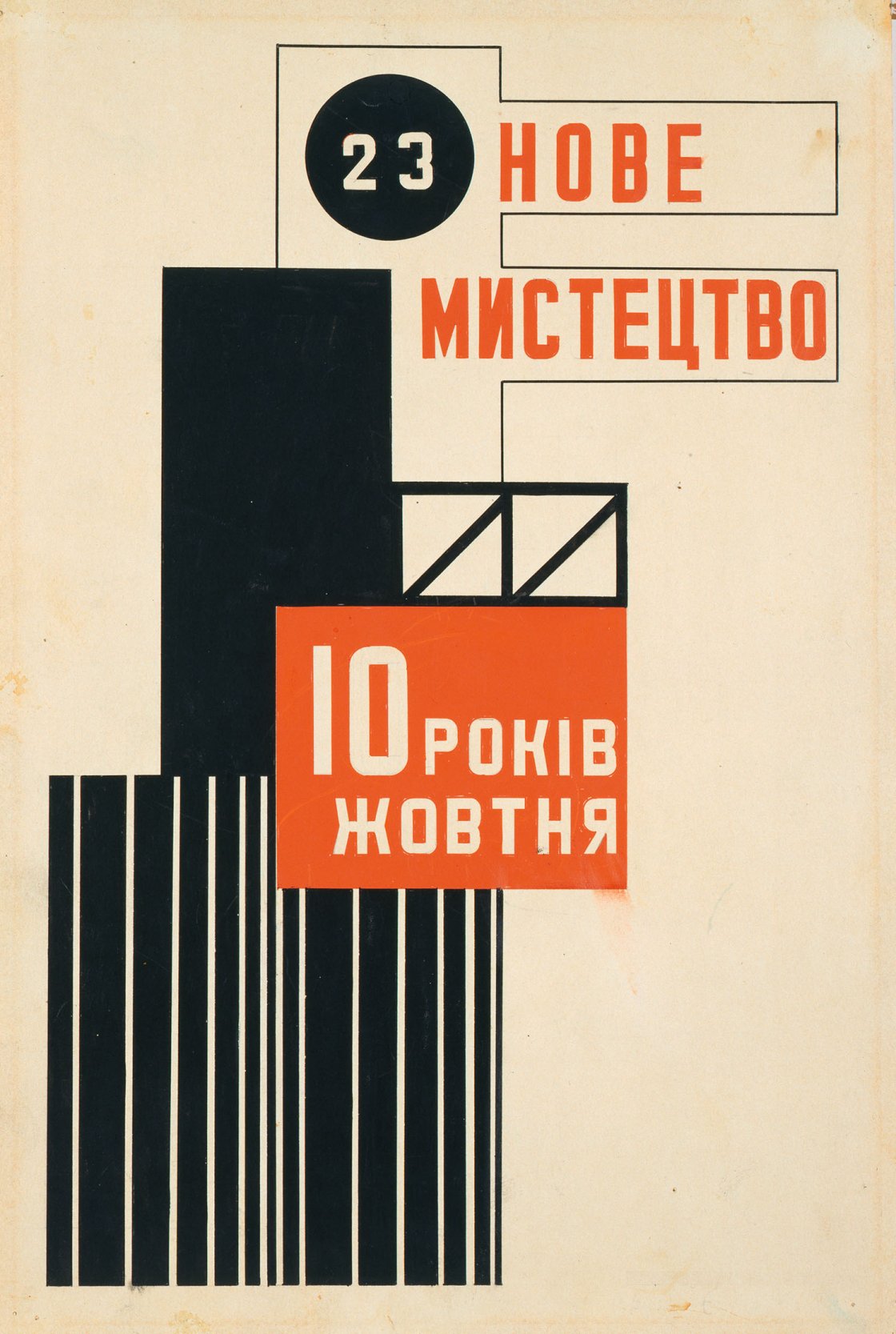
Vasyl Yermilov
A native of Kharkiv, Vasyl Yermilov spent his whole life in his hometown, apart from two short trips to Moscow and military service in Persia during World War I. Initially an adept of Cubism, in 1920 Yermilov’s works gradually started to incorporate seemingly incompatible artistic styles – stylised Ukrainian folk ornamentation and the Suprematism of Kazymyr Malevych. Throughout the 1920s, the artist turned to Constructivism, producing multiple reliefs that ranged from figurative to abstract compositions. At this time, he also created distinctive typefaces for various Ukrainian publications, such as Nove mystetsvo and Avant-garde. Following World War II, Yermilov fell into relative obscurity, with his art attracting attention, both at home and internationally, only in the late 1960s.
Ukrainian Artists at the Venice Biennale
Artists from Ukraine had participated in the Venice Biennale since 1897, first showing their work in the imperial Russian pavilion and, from 1924, in that of the Soviet Union. In 1928 and 1930, Ukraine had a dedicated section within the Soviet pavilion, with 17 and 15 works respectively. No other national republic of the USSR enjoyed such representation. The neo-Byzantine artworks of Mykhailo Boichuk’s school dominated the Ukrainian section in 1928, while two years later its highlights were Anatol Petrytskyi’s painting The Invalids (1924) and Oleksandr Bohomazov’s Sawyers at Work (1929).
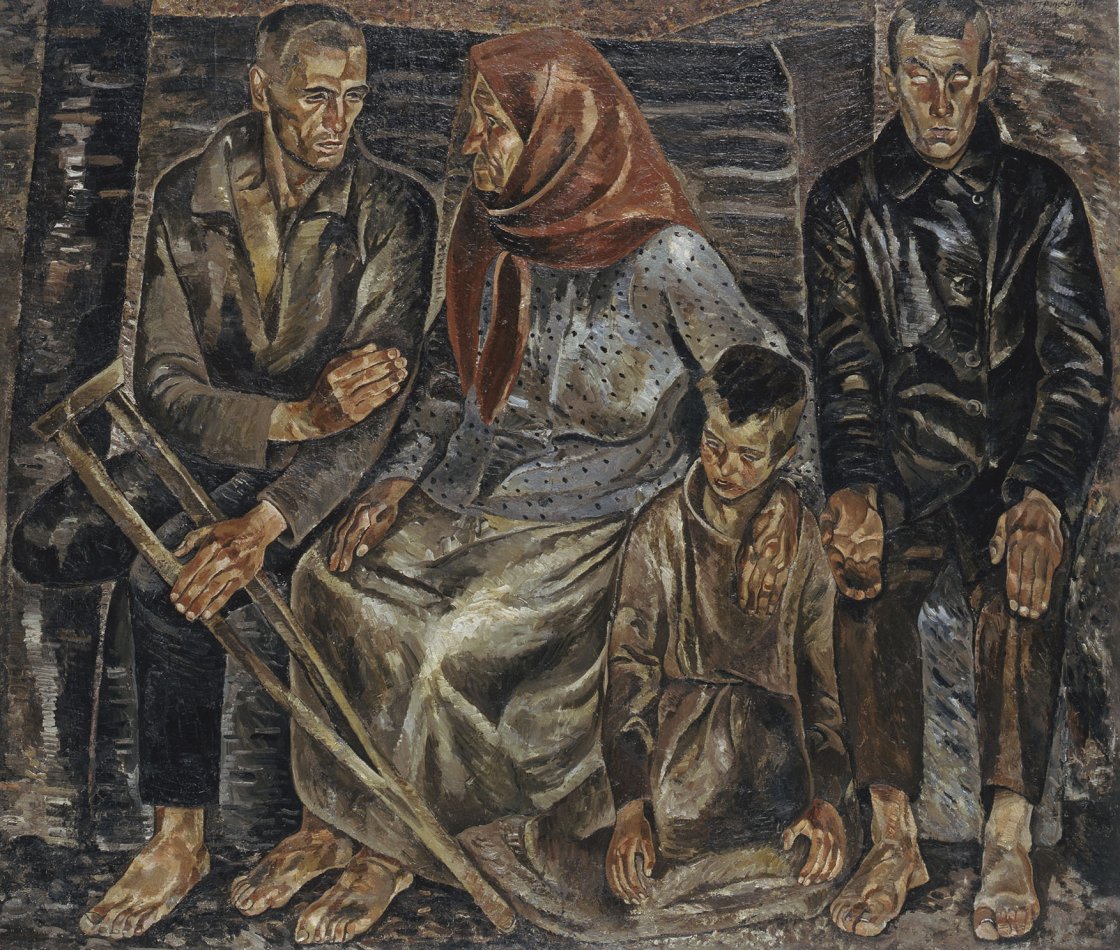
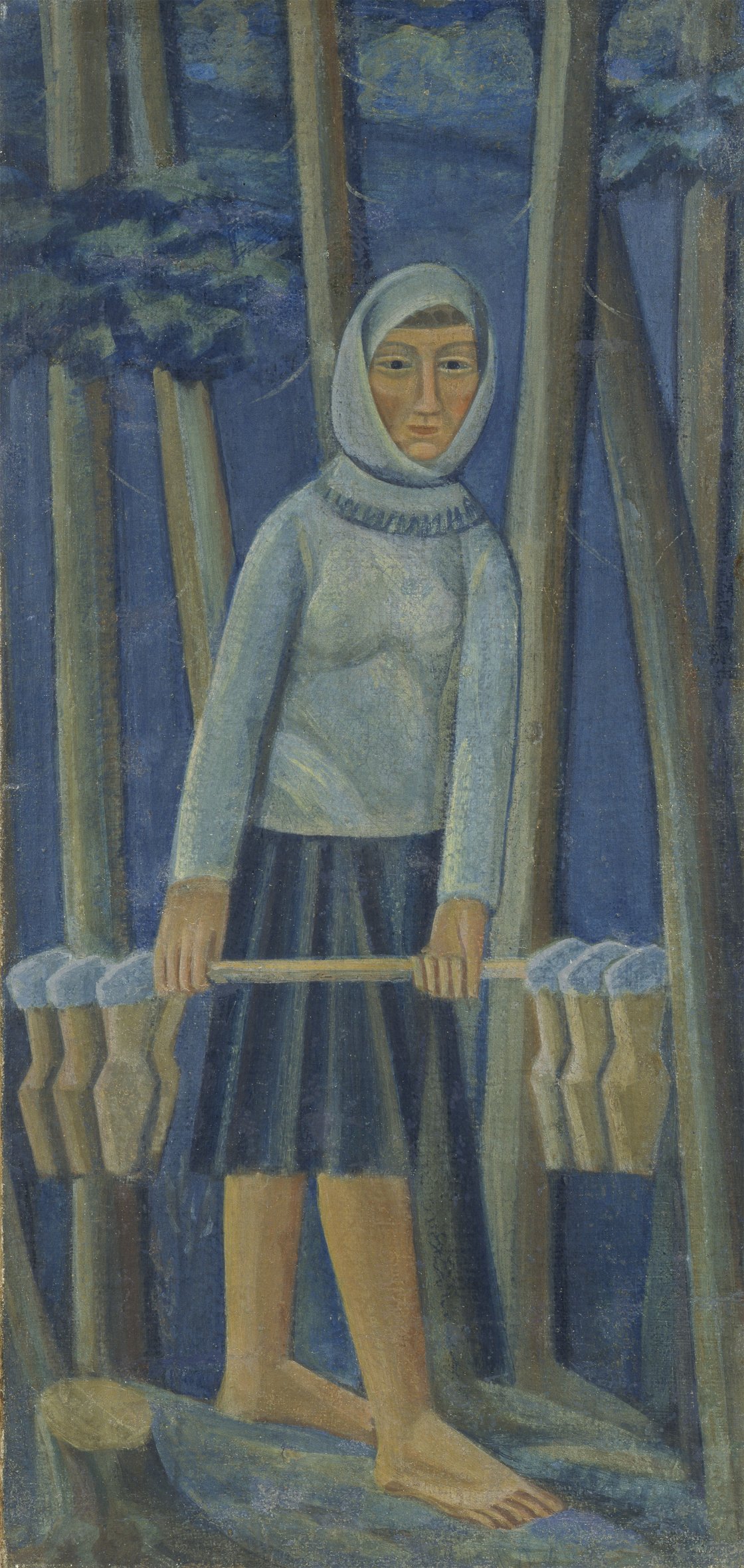
Boichukists
A native of Halychyna in western Ukraine, Mykhailo Boichuk completed his education at the art academies of Vienna, Krakow, Munich and Paris. In late 1917, he established a fresco, mosaics and tempera studio at the newly founded Ukrainian Academy of Art in Kyiv. Advocating for art as a national treasure and not a mere commodity, Boichuk arrived at a synthesis of styles, drawing on Byzantine art, Italian pre-Renaissance frescoes and Ukrainian folk art. In the early Soviet period, his studio emerged as a school of monumental art, with its students, henceforth known as Boichukists, completing numerous state commissions for public spaces and buildings. The collaboration proved short-lived, however: labelled ‘bourgeois nationalists’, Boichuk and a close circle of his associates were executed during the Stalinist purges of the 1930s, with most of their public art subsequently destroyed.
Kyiv Art Institute
The development of the visual arts in Ukraine in the 1920s–30s was intimately linked to the Kyiv Art Institute – the successor to the Ukrainian Academy of Art. It was the first institution of higher art education in Ukraine, founded when the country proclaimed its independence in 1917. In 1924, in consonance with the ideological tasks of the Soviet regime, the Academy was transformed into an Institute in order to bring educational methods in line with such trends in contemporary art as production design. To create a more dynamic curriculum, the Institute signed on new instructors from across the Soviet Union with many prominent avant-garde artists, such as Kazymyr Malevych and Vladimir Tatlin, joining the faculty.
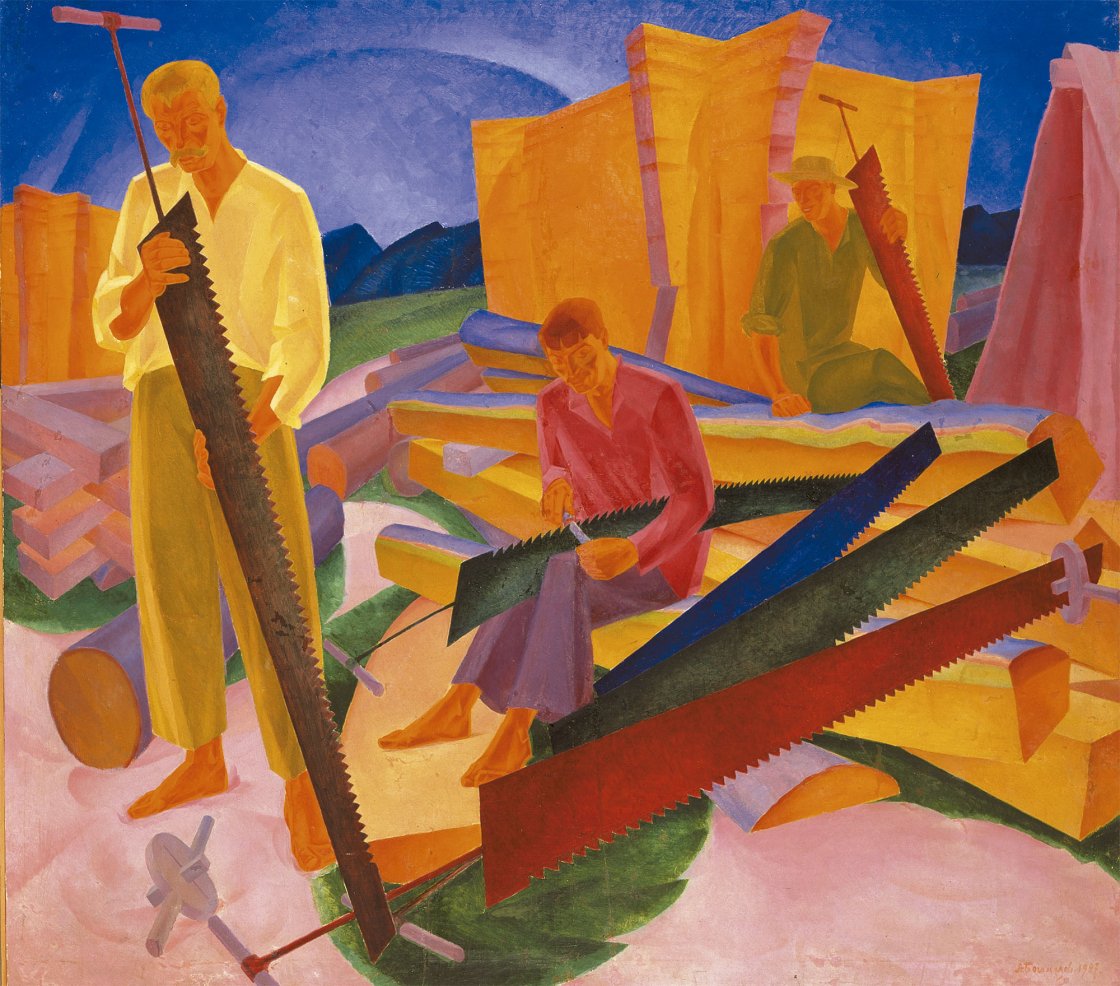
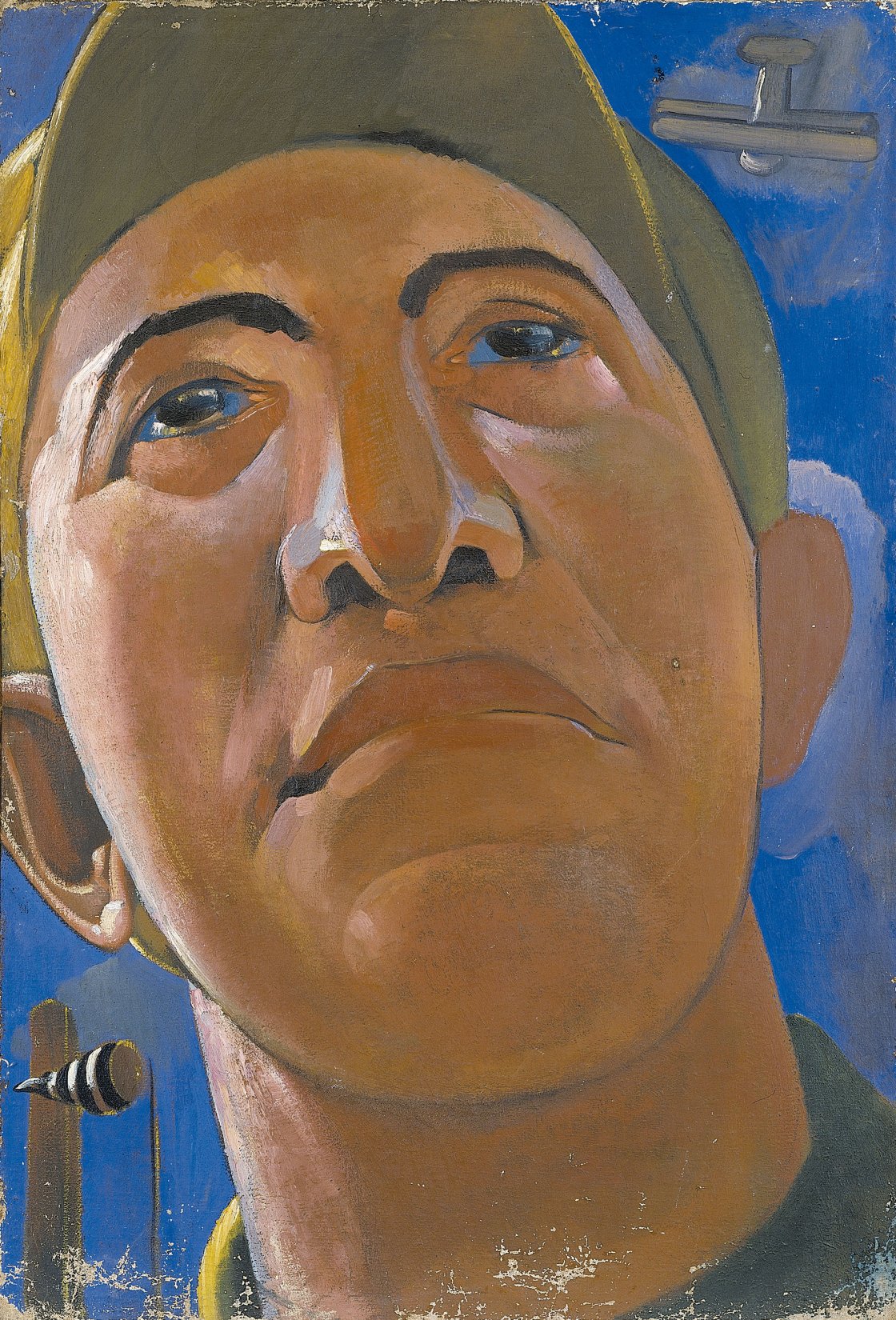
The Last Generation
The last generation of Ukrainian modernists matured in the late 1920s and early 1930s. Mainly graduates of the Kyiv Art Institute, these artists were fascinated with the Neue Sachlichkeit (New Objectivity) and Novecento Italiano international movements, but their artistic activity was cut short by a radical change in the political climate. Art was increasingly viewed through the prism of ‘class consciousness’ and Soviet subject matter came to dominate all spheres of artistic output. In 1932, Socialist Realism was introduced as the only official artistic style to be practised in the Soviet Union, with more value subsequently placed on the rally-like qualities in art rather than the merits of modernist experimentation.
Postscript
The policy of Ukrainisation was abruptly curtailed in 1931 and ruthless purges of the Ukrainian intellectual elite followed. Many writers, theatre directors and artists, including Mykhailo Boichuk, Les Kurbas, Ivan Padalka and Vasyl Sedliar, were labelled ‘bourgeois nationalists’ and faced summary execution. Many more were imprisoned in the Gulag. Manuscripts, books and artworks were incinerated. Murals were overpainted or scraped off walls. Artworks that were not destroyed were sent to secret, purpose-built repositories.
During Khrushchev’s de-Stalinisation period from the mid-1950s to the mid-1960s, interest in Ukrainian modernism started to renew. Some ‘formalist’ works were even reinstated in national museums, but the process was patchy and painful. At the same time, the West rediscovered the revolutionary avant-garde art of the early Soviet period. This led to the appropriation of Ukrainian artists, as they conveniently fell under the umbrella term ‘Russian avant-garde’. Artists who had spent all their lives in Ukraine, and whose artistic experimentation was integral to the development of Ukrainian art, unexpectedly became ‘Russian’. In the Eye of the Storm: Modernism in Ukraine, 1900–1930s seeks to correct these historical injustices by introducing the international public to the complicated story of Ukrainian modernism, an essential but little-known part of European culture.
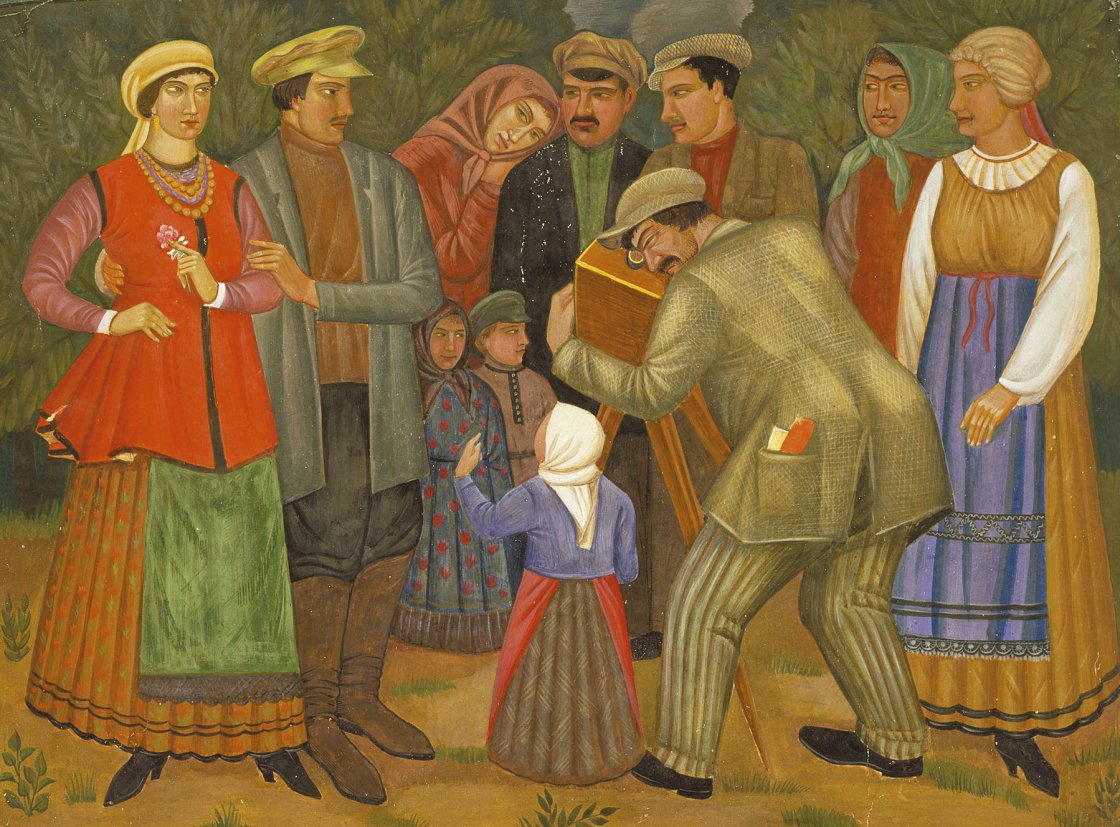
Acknowledgements
This exhibition has been made possible by the support of President Zelensky and the Office of the President of Ukraine. Also key is Oleksandr Tkachenko, the Ukrainian Minister of Culture, whose collaboration has enabled us to secure the exceptional loan of these works from a war-torn country.
We extend our gratitude to the National Art Museum of Ukraine and the Museum of Theatre, Music and Cinema of Ukraine for their generous loans, as well as to the private collectors who have collaborated.
Special thanks are due to Baroness Francesca Thyssen-Bornemisza, a member of the Board of Trustees of the Museo Nacional Thyssen-Bornemisza, who has passionately and courageously promoted the project from the outset and facilitated the complex negotiations to bring these works to Spain.
The support of the PinchukArtCentre has also been notable.
Mention should likewise be made of the work and dedication of the curators Konstantin Akinsha, Katia Denysova and Olena Kashuba-Volvach and their revealing essays that appear, together with those of other research scholars, in the magnificent edition published by Thames & Hudson.
This exhibition has been made a reality thanks to the support of Francesca Thyssen-Bornemisza, Museums for Ukraine, the Deputy Directorate-General for State Museums of the Directorate-General for Cultural Heritage and Fine Arts (Spanish Ministry of Culture and Sport), Mastercard, Omega Capital, SITspain and Hammam Al-Andalus, among others.
Don't miss any detail and get your audioguide!
Audioguides
- You can buy it at the audioguide desk on the ground floor of the museum.
- You can listen to it on your smartphone or on the devices we offer you.
- You will enjoy the explanation of 16 works and its duration is 45 minutes.
- In addition to enjoying this exhibition, it will give you access to all of these contents.
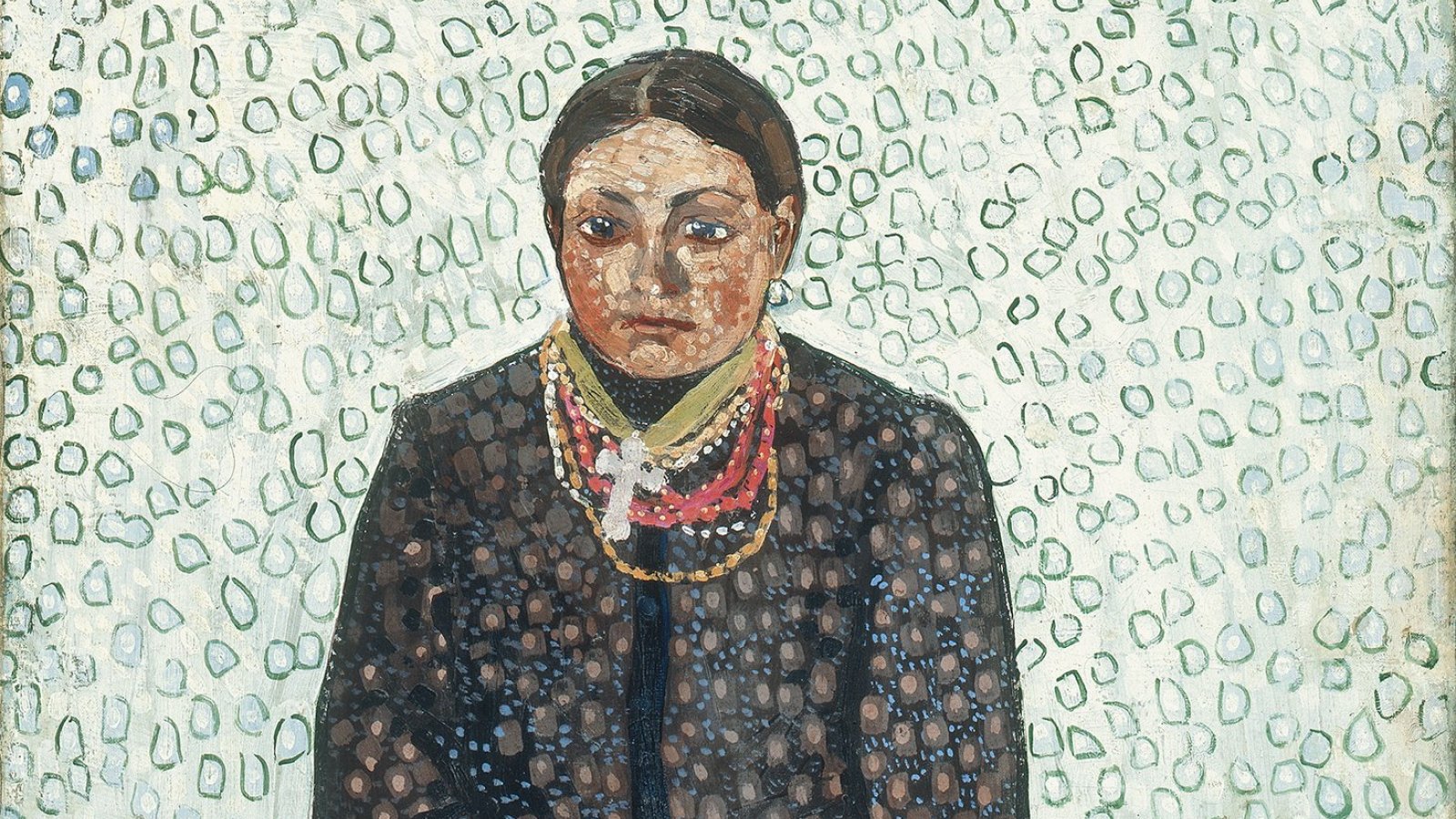
Spotify Playlist
